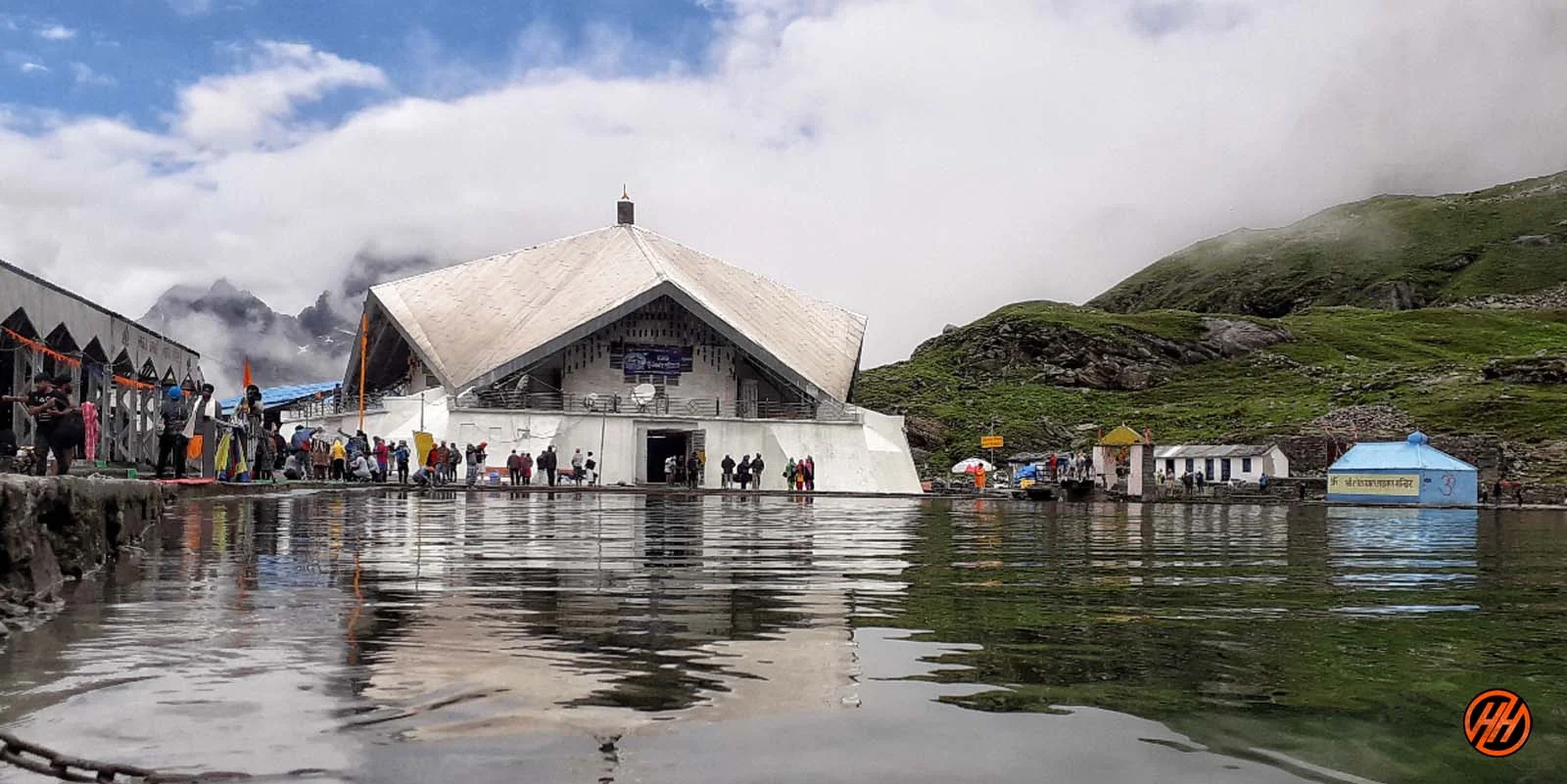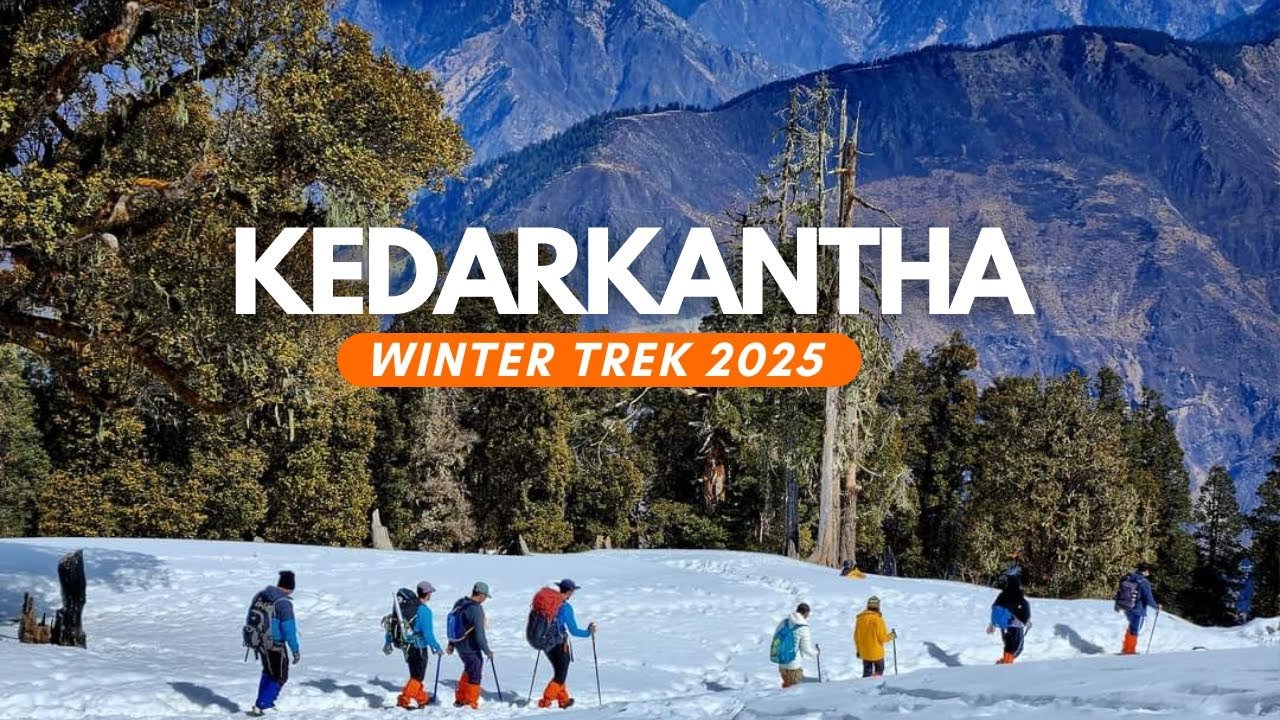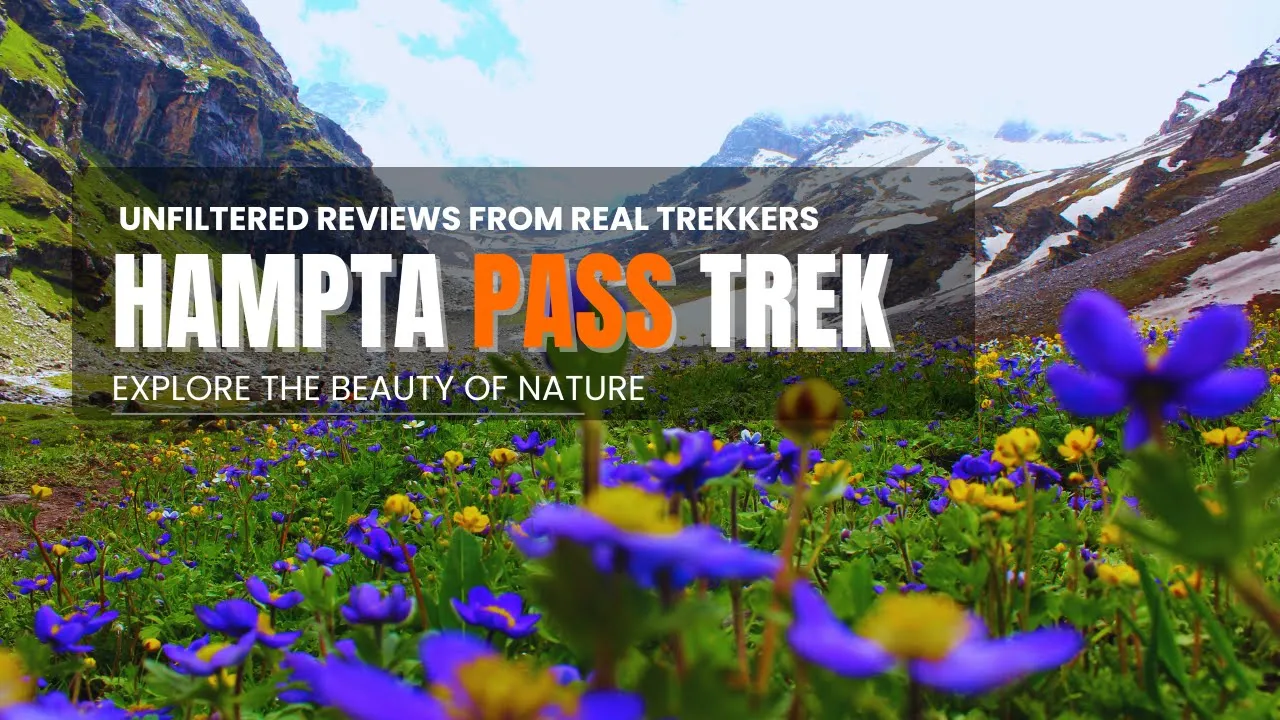The trek to Hemkund Sahib starts from Govindghat, which is easily accessible by road from Rishikesh or Haridwar. From Govindghat, it’s a trek of about 19 kilometers (11.8 miles) to reach Hemkund Sahib. The trek route passes through picturesque landscapes, dense forests, and meandering rivers.
Hemkund Sahib Trek Guide
Day 1: Pickup from Rishikesh. Drive to Govindghat.
Day 2: Drive from Govindghat to Pulna. Last road head, then same day trek to Ghangaria (9 km, approx. 7-8 hours).
Day 3: Trek from Ghangaria to Hemkund Sahib and back to Ghangaria.
Day 4: Ghangaria to Govindghat. Return to Rishikesh.
Day 1: Pickup to you Rishikesh Drive to Govindghat
Note: AC vehicles are only available for customized trek packages.- Depart from Rishikesh early in the morning.
- Travel by road to Govindghat, which is approximately a 10 to 12-hour journey.
- Along the way, you’ll pass through picturesque towns and villages, as well as the beautiful landscapes of Uttarakhand.
- Arrive in Govindghat by evening.
- Check into your accommodation in Govindghat.
- Rest and prepare for the trek to Hemkund Sahib the next day.
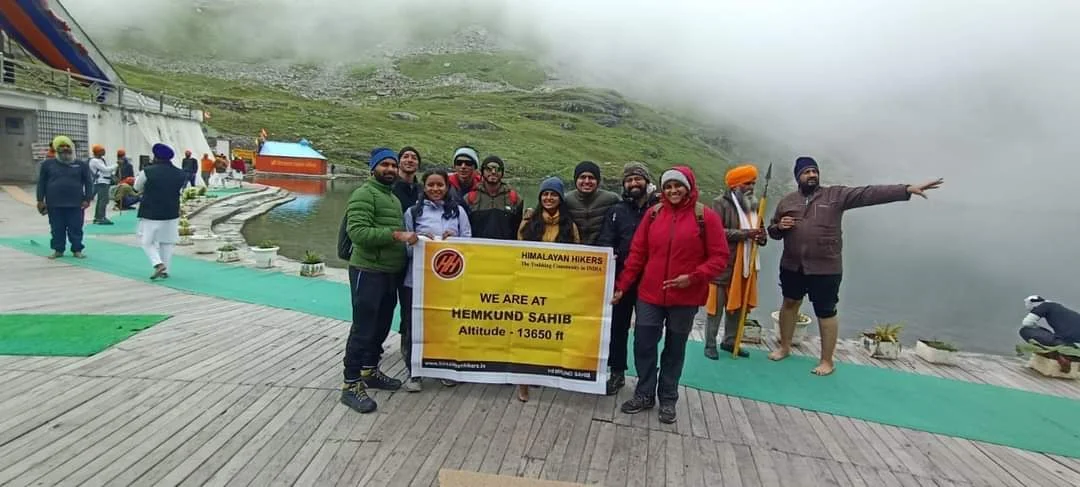
Day 2: Drive from Govindghat to Pulna Last Rad head same day trek to Ghangaria 09 km) 7/8 hours)
- Have breakfast in Govindghat and start the trek to Ghangaria.
- The trek from Govindghat to Ghangaria is approximately 13 kilometers (8 miles) long and takes around 5-6 hours.
- Along the way, enjoy the scenic beauty of the surroundings, including lush green valleys and cascading waterfalls.
- Reach Ghangaria by afternoon and check into your accommodation.
- Rest and relax in Ghangaria.
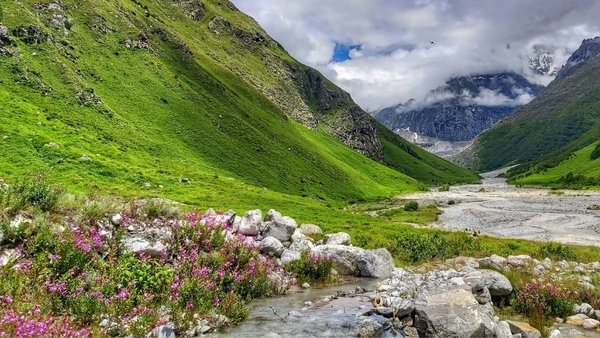
Day 3: Trek from Ghangaria to Hemkund Sahib and back to Ghangaria
- Have an early breakfast in Ghangaria and start the trek to Hemkund Sahib.
- The trek from Ghangaria to Hemkund Sahib is approximately 6 kilometers (3.7 miles) long and takes around 7-8 hours.
- Visit the Gurdwara and the sacred Hemkund Lake at Hemkund Sahib.
- Spend some time exploring the surroundings and soaking in the spiritual atmosphere.
- After paying your respects at Hemkund Sahib, start the descent back to Ghangaria.
- Overnight stay in Ghangaria.
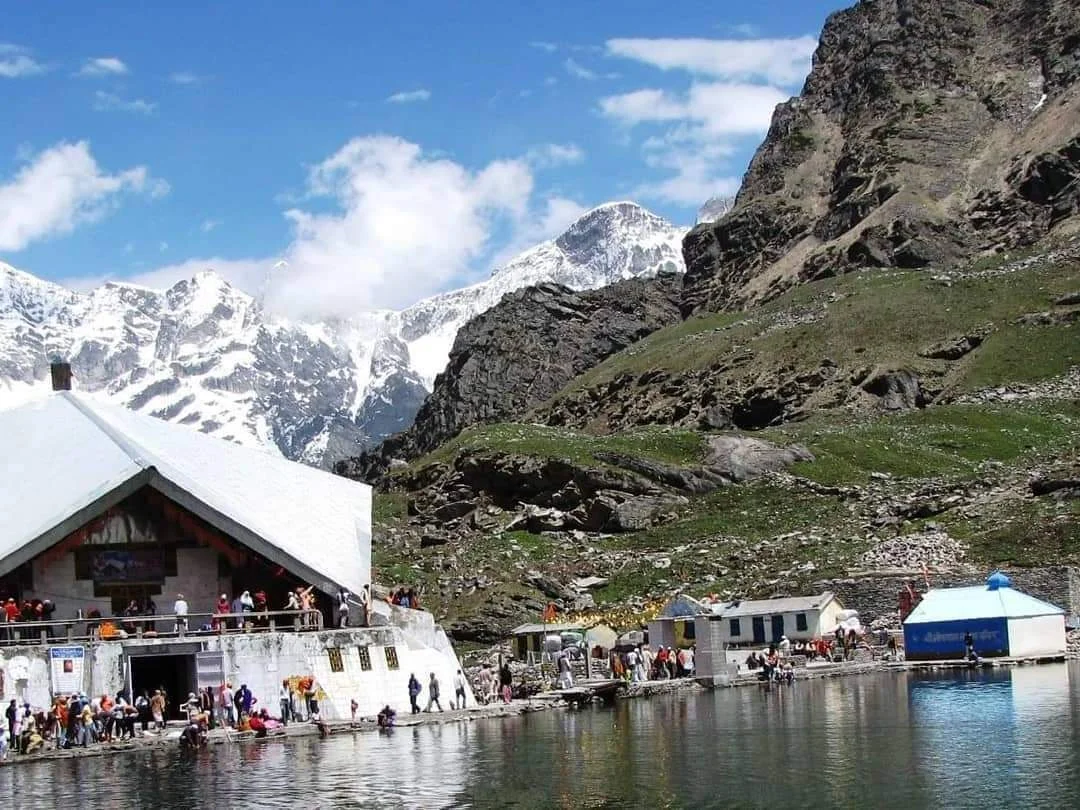
Day 4: Ghangaria to Govindghat and Return to Rishikesh
- Have breakfast in Ghangaria and start the trek back to Govindghat.
- The descent from Ghangaria to Govindghat is relatively easier and takes around 4-5 hours.
- Reach Govindghat by afternoon.
- Depart from Govindghat and travel back to Rishikesh.
- Arrive in Rishikesh by evening, concluding your journey to Hemkund Sahib.
This itinerary provides a comprehensive plan for visiting Hemkund Sahib from Rishikesh and back. Ensure to plan for any necessary breaks, check the weather forecast, and make appropriate preparations for the trek.
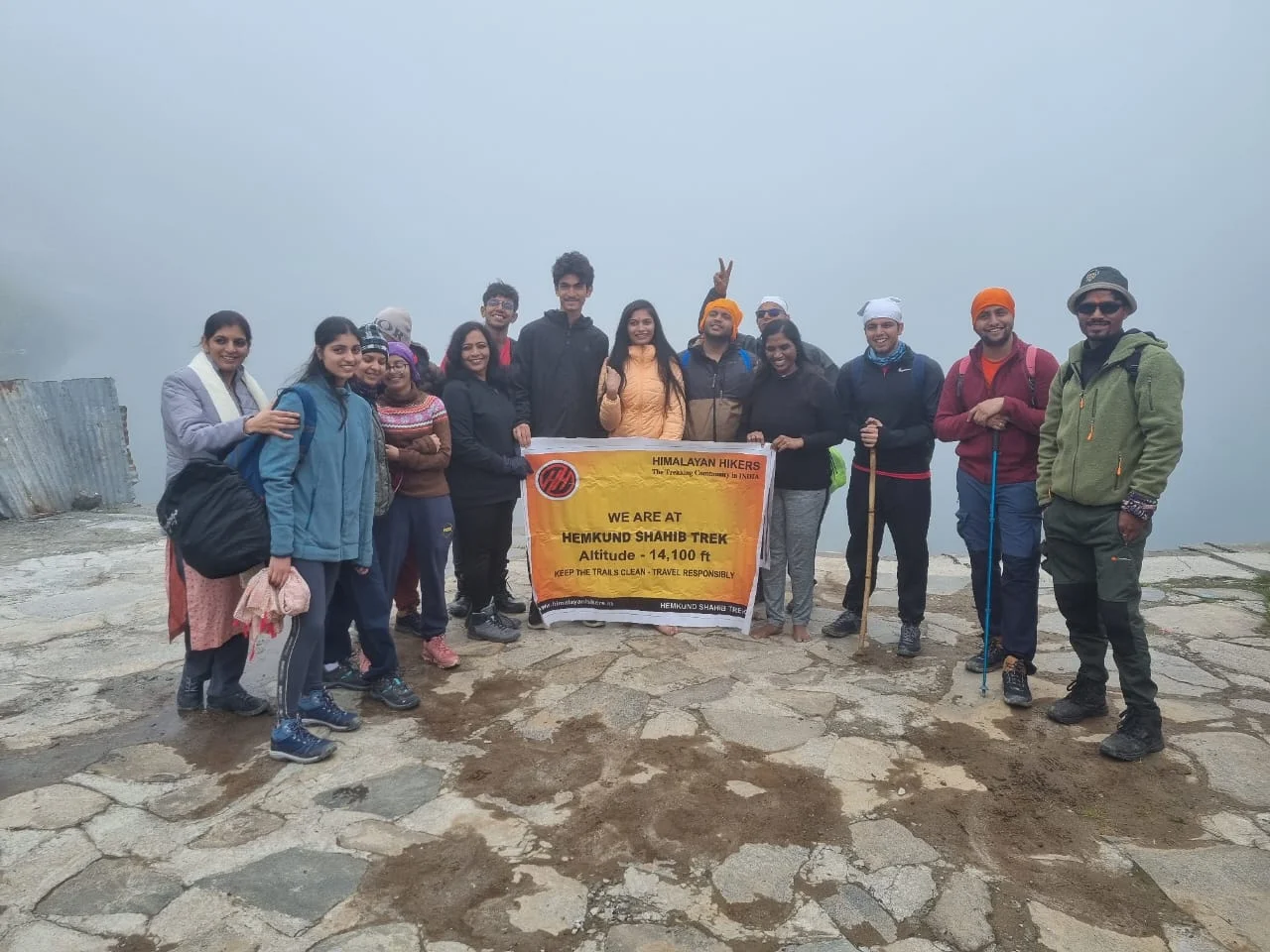
The best time to visit Hemkund Sahib Trek:
The best time to visit Hemkund Sahib Trek is generally during the summer and early autumn months, from May to October.
- May to June: This period marks the beginning of the pilgrimage season as the snow starts melting, making the trek more accessible. The weather is pleasant during these months, with clear skies and mild temperatures, making it ideal for trekking.
- July to August: This period experiences the monsoon season, bringing heavy rainfall to the region. While the lush greenery adds to the beauty of the landscape, trekking during this time can be challenging due to slippery trails and the risk of landslides.
- September to October: These months constitute the post-monsoon season when the weather starts clearing up, and the skies become clearer. The landscape is still green, and the weather is relatively cool, making it a favorable time for trekking. Additionally, the autumn months offer stunning views of the surrounding mountains adorned with colorful foliage.
It’s important to note that the weather in the Himalayan region can be unpredictable, so it’s advisable to check the current weather conditions and forecasts before planning your visit. Additionally, the pilgrimage to Hemkund Sahib is typically closed during the winter months (November to April) due to heavy snowfall and harsh weather conditions, so it’s essential to plan your visit accordingly.
Some of the main points of interest at Hemkund Sahib include:
- Hemkund Sahib Gurdwara: The main attraction is the Gurdwara located at an altitude of about 4,300 meters (14,107 feet) above sea level. This sacred Sikh shrine is dedicated to Guru Gobind Singh, the tenth Sikh Guru. Devotees visit the Gurdwara to pay their respects and seek spiritual blessings.
- Hemkund Lake: The trek to Hemkund Sahib culminates at the Hemkund Lake, also known as Lokpal Lake. This glacial lake, surrounded by snow-capped peaks and lush green meadows, is considered sacred by Sikhs and Hindus alike. Many pilgrims take a dip in the icy waters of the lake as it is believed to cleanse the soul.
- Surrounding Scenery: The journey to Hemkund Sahib offers breathtaking views of the Himalayan mountains, dense forests, and alpine meadows. The scenic beauty of the surroundings adds to the spiritual experience of the pilgrimage.
- Sikh History and Heritage: Hemkund Sahib is steeped in Sikh history and heritage. Visitors can learn about the history of Sikhism, the sacrifices made by Sikh gurus and warriors, and the significance of Hemkund Sahib in Sikh tradition.
- Sarovar (Holy Pond): Adjacent to the Gurdwara, there is a sarovar (holy pond) where pilgrims can take a ceremonial bath before entering the Gurdwara. It is believed that bathing in the sarovar purifies the mind and body.
- Flora and Fauna: Hemkund Sahib is home to a diverse range of flora and fauna. During the trek, visitors may encounter various species of birds, animals, and Himalayan flowers such as Brahma Kamal, blue poppy, and rhododendrons.
These points of interest collectively make Hemkund Sahib a significant pilgrimage site and a popular destination for spiritual seekers and nature lovers alike.
Reaching Hemkund Sahib: Hemkund Sahib is located in a remote area of the Himalayas, and reaching the site involves a combination of road travel and trekking. Here's how you can reach Hemkund Sahib:
- By Air: The nearest airport to Hemkund Sahib is the Jolly Grant Airport in Dehradun, Uttarakhand. From Dehradun, you can hire a taxi or take a bus to reach Govindghat, the base camp for the trek to Hemkund Sahib.
- By Train: The nearest railway station to Hemkund Sahib is the Rishikesh Railway Station. From Rishikesh, you can hire a taxi or take a bus to reach Govindghat.
- By Road: Govindghat serves as the starting point for the trek to Hemkund Sahib. Govindghat is well-connected by road to major cities like Rishikesh, Haridwar, and Dehradun. You can either drive or take a bus from these cities to reach Govindghat.
Govindghat to Ghangaria: From Govindghat, you need to trek or take a shared taxi to reach the village of Ghangaria. The trek from Govindghat to Ghangaria is approximately 13 kilometers (8 miles) and takes around 5-6 hours on foot. Alternatively, you can hire a mule or take a helicopter service to reach Ghangaria.
Ghangaria to Hemkund Sahib: From Ghangaria, it’s another trek of about 6 kilometers (3.7 miles) to reach Hemkund Sahib. The trek is steep and challenging, but the path is well-marked. It usually takes around 3-4 hours to trek from Ghangaria to Hemkund Sahib.
It’s essential to check the weather conditions and plan your trek accordingly, especially during the monsoon season when the trails can be slippery and prone to landslides. Additionally, it’s advisable to carry essential trekking gear, including sturdy footwear, warm clothing, rain gear, and sufficient food and water.

Mandatory Documents
Original and photocopy of government photo identity card- (Aadhar Card, Driving License, Voters ID, etc,)
Passport and Visa important to foreigners
Medical Certificate (First part should be filled by the Doctor and Second part by the Trekker)
Declaration Certificates
Note: – Many trekkers commit the same mistake of carrying unnecessary items on a trek which only makes the backpack heavy. It is important to know the right items to carry. It differs from season to season if you are trekking in summers then carry less layers of warm clothing and if you are trekking in winters carry enough layers to protect yourself against chilly cold.
Necessary Items for trekkers
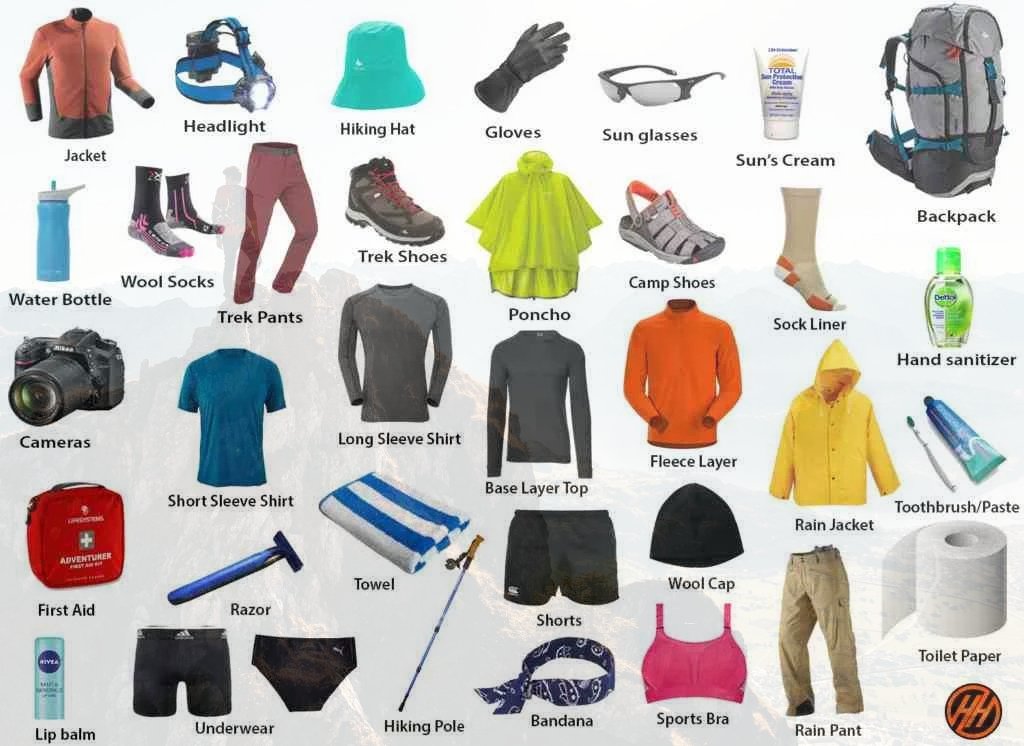
Basic Trekking Gears

The Clothes You Should Bring On On Hemkund Sahib Trek
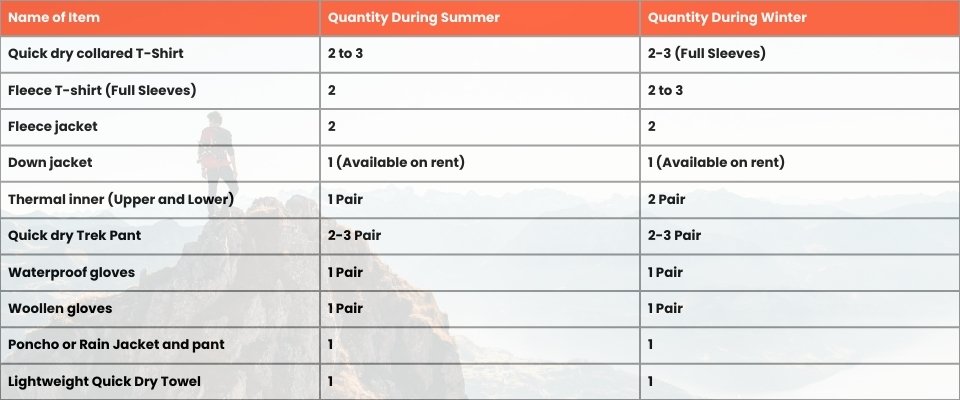
Head Gears

Foot Gears

Personal Care Essentials

Carry a Personal Medical Kit
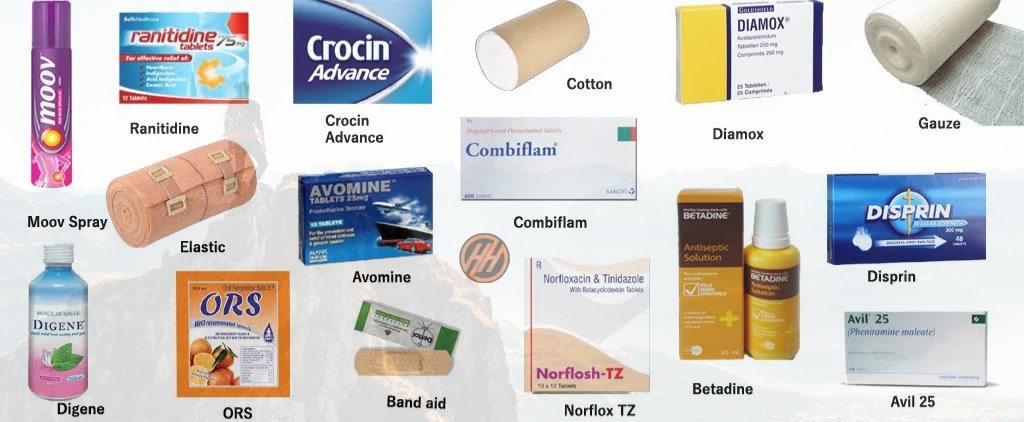
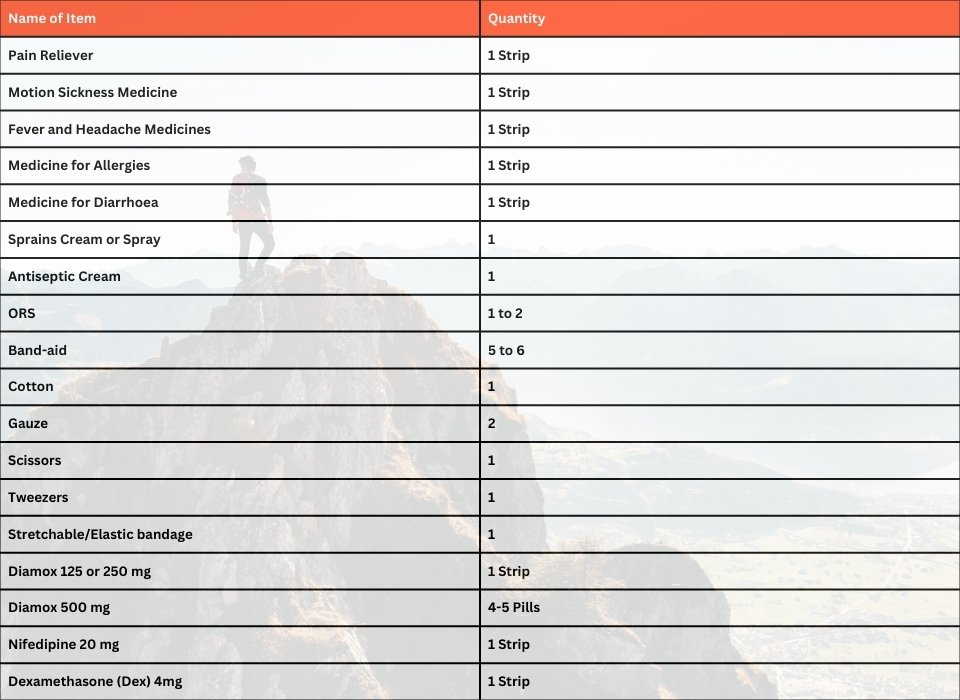
Are you Looking for Trekking Equipment on Rent?
If any trekker requires trekking equipment on rent, Himalayan Hikers offers the best-quality gear available for rental. Many individuals are in need of such equipment, and renting provides a cost-effective solution, allowing them to access high-quality gear at an affordable price without the need for a significant investment for short-term use.

Trek Equipment You can book directly on first day at the Sankri Base Camp.
Note:-
Please take all medicines only when prescribed by the doctor. In case you face any problem during your trek,
discuss and take advice from the Professional guide.
Trekking with Himalayan Hikers: Trekking with a reputable trekking company, such as Himalayan Hikers, offers several benefits that can enhance your experience to Hemkund Sahib or any other destination in the Himalayas:
- Expert Guidance and Support: Himalayan Hikers typically employ experienced guides who are knowledgeable about the local terrain, weather conditions, and culture. They provide valuable guidance throughout the trek, ensuring your safety and well-being.
- Safety: Trekking in the Himalayas involves various challenges, including altitude sickness, unpredictable weather, and rugged terrain. Trekking with a reputable company like Himalayan Hikers ensures that safety measures are in place, such as proper acclimatization, emergency evacuation plans, and well-equipped guides trained in first aid.
- Logistical Support: Organizing a trek involves numerous logistical considerations, such as transportation, accommodation, permits, and meals. Himalayan Hikers take care of these arrangements, allowing you to focus on enjoying the trek without worrying about the details.
- Quality Equipment: Trekking companies often provide or facilitate the rental of quality trekking equipment, such as tents, sleeping bags, and trekking poles, ensuring that you have the necessary gear for a comfortable journey.
- Local Insights and Cultural Immersion: Trekking with a local company like Himalayan Hikers provides opportunities for cultural immersion and interactions with local communities along the trekking route. Guides can share insights into local customs, traditions, and wildlife, enriching your trekking experience.
- Group Dynamics: Joining a trekking group organized by Himalayan Hikers allows you to meet like-minded adventurers from around the world, fostering camaraderie and creating memorable shared experiences.
- Environmental Responsibility: Responsible trekking companies like Himalayan Hikers prioritize environmental conservation and sustainable tourism practices, minimizing the ecological impact of trekking activities and promoting responsible waste management.
Ultimately, trekking with Himalayan Hikers or a similar reputable company offers peace of mind, convenience, and opportunities for a memorable and rewarding trekking experience in the Himalayas.

